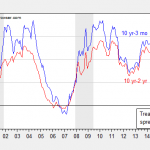Switzerland will vote on the “Save Our Swiss Gold” initiative this Sunday, and the news is reminding everyone just why the financial world is watching so closely. USA Today and the Wall Street Journal can give you a good summary of how the Swiss gold initiative would affect the policies of the Swiss National Bank (SNB). The Guardian explains why a “yes” vote on the initiative would be extremely bullish for gold in this article published yesterday:

Its supporters come from the populist right-wing Swiss People’s party (SVP), which says in its mission statement: ‘Most Swiss don’t even know that part of the nation’s gold is stored abroad and that the SNB has already sold over half of the gold reserves.’
“Switzerland, a country with a strong tradition of refining and trading gold, has the highest gold reserves per inhabitant of any country, equivalent to four ounces a head. For many this remains insufficient.
If the Swiss vote yes on Monday, the SNB would be required to buy 1,500 tonnes of gold over the next five years, the equivalent of almost 70% of the global gold mined every year. Experts say the gold price would soar. ‘It would be an unforgettable day for the precious metal industry,’ according to German business analyst Michael Schröder.”
Of course, the SNB is terrified of the initiative passing. The bank’s main argument against the gold referendum is that it would make it too difficult for the central bank to conduct its monetary policy, particularly the trick of pegging the Swiss franc (CHF) to the euro through its “minimum exchange rate.” This sounds important, and central bankers are great at spinning stories that make their monetary manipulation sound essential and complex.
However, the real effects on the Swiss economy of pegging the CHF to the euro are easily understood. The following piece by Eric Schreiber explains the history of the peg, which has lead to the now dangerously high balance sheet the SNB. While a bit technical, Schreiber deftly counters the SNB’s argument against a “yes” vote while emphasizing the symbolic importance of this vote in rebalancing the power of the people versus the banking elite.













Leave A Comment